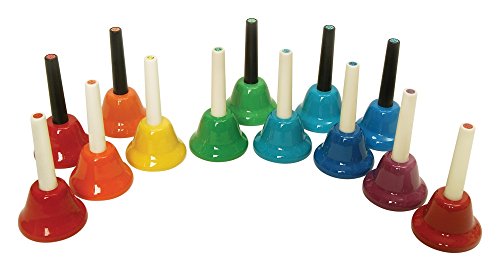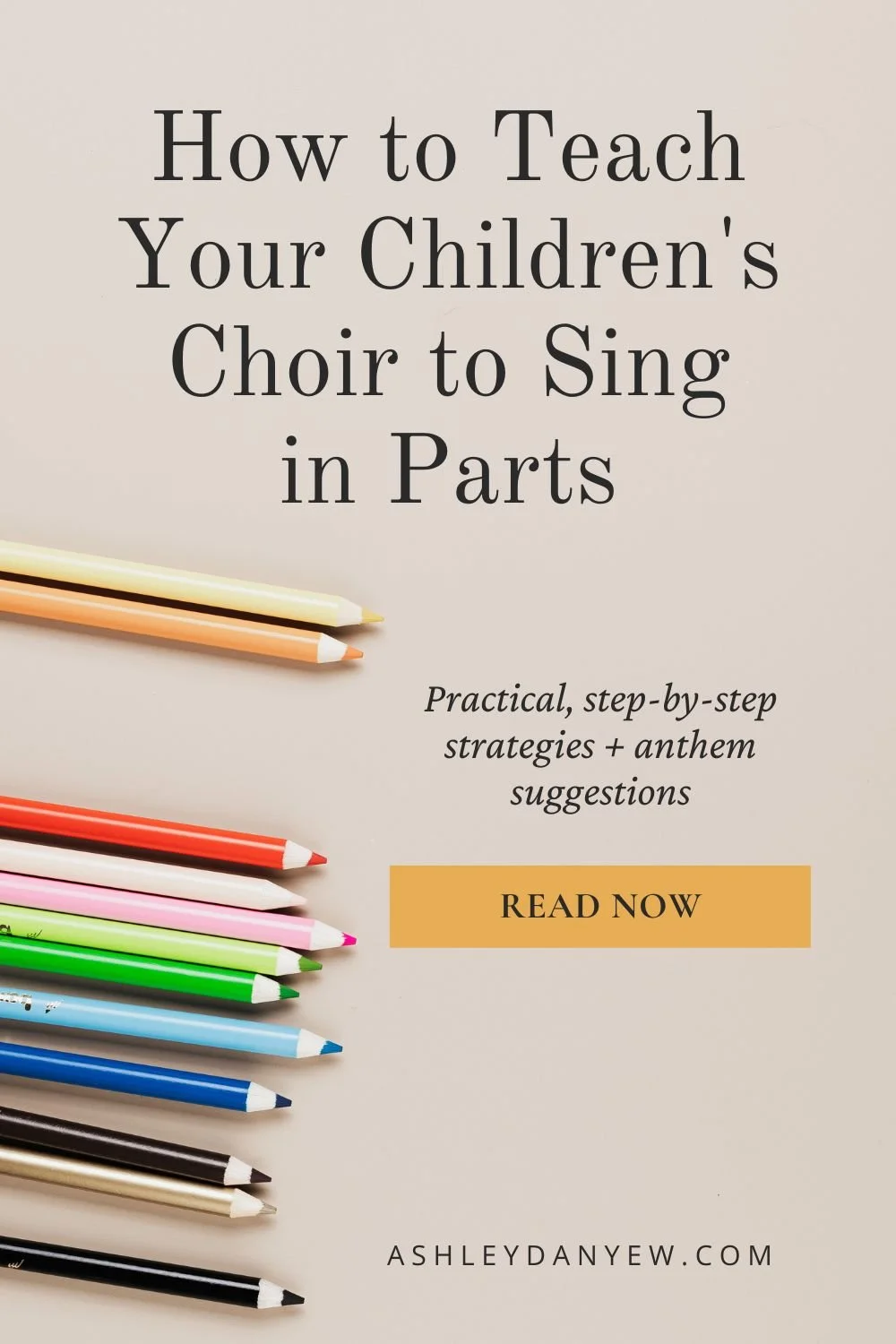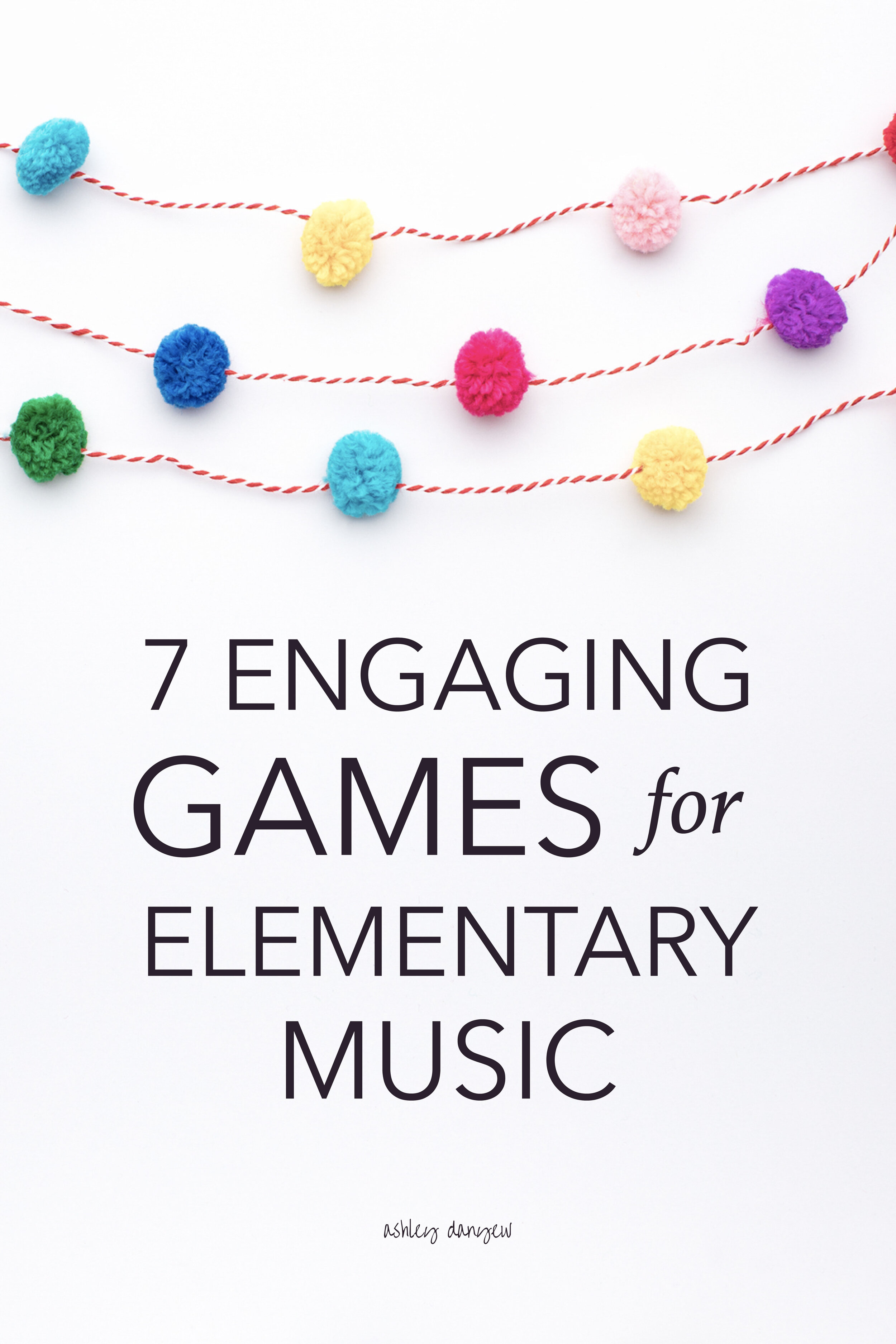Do you use instruments with your children's choir?
Playing an instrument—even if it's just a few jingle bells on a pipe cleaner—is a great way to foster musical development in your young singers.
Here are a few of the primary benefits:
1. It helps children be actively involved in the music-making process.
Children learn by doing, by moving, by experimenting. Music is a form of play, for young children, especially, and interacting with it through playing instruments and singing only deepens their experience.
2. It gives children an opportunity to be creative and explore music in new ways.
Playing instruments gives children an opportunity to improvise and even compose their own rhythm patterns and short melodies in ways that are more challenging in a choral setting.
3. It broadens children's horizons and exposes them to new sounds and timbres.
In addition, it gives you an opportunity to talk about high vs. low sounds, loud vs. soft, fast vs. slow, and other musical contrasts.
Have I convinced you? If you're looking for ways to incorporate instruments into your children's choir, you're in the right place.
Let's start by talking about instrument types.
*Disclosure: I get commissions for purchases made through links in this post.
Types of Instruments
There are three primary groups of instruments: Orff, chimes/bells, and percussion. Here are some of the instruments that fall under each of these categories:
Orff Instruments
metallophone (metal)
xylophone (wood)
glockenspiel (bells)
The metallophone is great for longer note values (whole notes, half notes), since it takes a while for the sound to decay. Xylophones are great for melodies and ostinato patterns, as well as harmonic accompaniment patterns. Glockenspiel work well for introductions, interludes, and melodies.
Hand Chimes & Handbells
colored handbells (for preschool children)
hand chimes
For more on using colored handbells with children, see this post: How to Start a Children's Handbell Choir and this video.
Rhythm & Percussion Instruments
claves or rhythm sticks
maracas
triangle
hand drum, tom, or tubano
tambourine
finger cymbals
shakers
guiro
wood block
sand block
jingle bells
rainstick
body percussion (snap, clap, tap)
If your church doesn't have any instruments, this is a great place to start. Some of these you can make yourself: wood blocks, sand blocks, rhythm sticks (dowels), jingle bells, shakers (plastic eggs with dried rice), etc.
For more on different types of percussion instruments, see this post: Classroom Instruments: Small Percussion
How to Introduce Instruments to Your Choir
When it comes to introducing instruments to your choir, there are a few things you should know. Here are a few helpful tips and teaching strategies:
Practice First
First, it's important to have children demonstrate the rhythm in their hands first (clapping or tapping). Then, have them pretend to play the instruments before they actually have them in their hands.
Rest, Ready, Play
Before you distribute the instruments, explain that there are three different positions: Rest, Ready, and Play (source). Have the children practice these before they’re holding an instrument.
Rest = instrument on floor, sticks/mallets on shoulder or head (like antennae)
Ready = instrument in hand, sticks/mallets ready to play, eyes on director
Play = playing rhythm patterns, playing melodies, improvising, making music!
Demonstrate Basic Playing Technique
Pull out the instrument you’re introducing, name it, and demonstrate what it sounds like and how to play it.
If you’re introducing an instrument with mallets (e.g. metallophone, xylophone), demonstrate how to hold the mallets (hold between your thumb and forefinger, then wrap the rest of your fingers loosely around). Distribute mallets to those who will be playing (ask them to show the "rest" position until you give further instructions), then have them practice tapping a steady beat on the floor before playing the instrument. Feel the mallet bounce off the ground each time. (source)
For younger children, consider removing bars you don’t need to make it easier for children to recognize patterns and play successfully from the start. For instance, you might start with C, D, E, G, and A.
Divide the Group in Half
Depending on the age of your singers, consider giving instruments to half the group while the other half sings, keeps a steady beat, and observes. Then, have them switch. Things are less likely to get out of control this way (source).
Give Them a Chance to Try it Out
Once everyone has their instrument, give them an opportunity to try it out for themselves. Give them a set amount of time to experiment (maybe 15 seconds), then have them return to “rest” position.
Practice Following Directions
Practice going from “rest” to “ready” a few times, then give them a simple pattern to play when you give them the cue. Give the other group instructions ("clap the same pattern as the instruments," "keep a steady beat,” or “tap this different pattern”) and give them a minute to practice. Then, try putting both parts together.
Things to Do with Instruments
There are lots of ways you can use instruments with your children’s choir, both in rehearsal and in worship. Here are a few ideas:
Musical story-telling
Tell a Bible story and have the children create their own sound effects in response. Come up with some ideas in advance - instruments that might portray certain characters or play when certain words are said. Some stories that work really well: Noah's Ark ("and the rain came down"), Jesus Walking on Water ("wind," "waves"), and the Nativity (try using different instruments to represent different characters).
Underscoring
Instrumental underscores are great for Scripture readings, narration, or rhythmic chants.
Here are a few video examples:
Jesus Loves Me (The First Church Orff Kids)
The Armor of God Scripture Reading (Country Club Christian Church)
Developing a Musical Vocabulary
Use a set of rhythm and/or tonal pattern cards (like these Younger Elementary and Older Elementary sets) to help children learn and develop a rich musical vocabulary. Have them chant a rhythm pattern, then play it on their instrument or sing a tonal pattern, then play it on a glockenspiel.
For older children, have them sightread a series of four patterns in a row (rhythm or tonal) or create their own phrases by working together to rearrange the cards and play what they composed.
Accompanying
Use a simple ostinato pattern, cluster chords for chimes or bells, open 5ths (melodic or harmonic), or the notes of the bass line to accompany a choral anthem, hymn, or song.
Here are a few video examples:
Mary Had a Baby
Gloria (St. Mary Magdalene, Toronto)
What Wondrous Love
O Come, O Come, Emmanuel (Northwood Presbyterian Church)
Hymn Medley (First United Methodist Church, Natchitoches, Louisiana)
Music Collections
If you’re just getting started, these collections might be helpful to you. Each one includes several songs/anthems for children’s choir with corresponding instrumental parts.
Rejoice with Drum and Voice
Kerri Lynn Nichols
Includes: Do Unto Others; For God So Loved; God is Love; Jesus, Jesus; Somebody's Knockin' at Your Door; Kum Ba Yah/Amazing Grace; and more
Children’s Orff Music for Church, Vol. I
Michael R. Nichols
Includes: Give God the Glory, The B-I-B-L-E, Let Your Light Shine Before Men, Jesus In the Morning, Thank You for Loving Me, Sing to the Lord a Joyful Song, God's Holy Spirit, Angels and Shepherds Come This Day, Easter Morning
Praise and Honor: Six Anthems
Michael Burkhardt
Unison/2-part
Includes: Ezekiel Saw the Wheel; Love Consecrates the Humblest Act; Oh, Won’t You Sit Down?; Praise and Honor; This Little Light of Mine; and Who Built the Ark?
Come to Bethlehem: Five Carols
Michael Burkhardt
Unison/2-part/3-part
Includes: He Is Born; Whence Comes This Rush of Wings; Come to Bethlehem with Me; On December Five and Twenty; Kling Glockchen
Learn More
Want to learn more about teaching instrumental technique and using instruments with your choir?
Helpful video workshops:
Make a Joyful Noise: Instruments in the Children’s Choir Rehearsal (Part I)
Make a Joyful Noise: Instruments in the Children’s Choir Rehearsal (Part II)
Make a Joyful Noise: Instruments in the Children’s Choir Rehearsal (Part III)
Celebrating the Season: Advent & Christmas (Part I)
Celebrating the Season: Advent & Christmas (Part II)
An inside look at an Orff classroom:
Learning music through Orff Schulwerk
A doctoral thesis with several sample teaching plans:
Teaching Children Hymns in the Church Setting Using Orff and Kodály-Based Strategies
Do you use instruments with your children’s choir? What are your favorite ways to use them?
















































